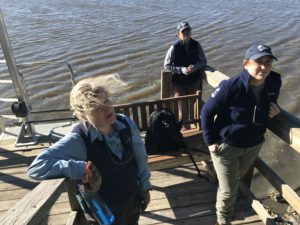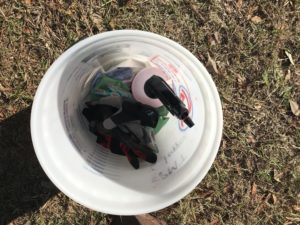
Invasive species in the national parks are a problem throughout the park system. Azaleas brought in as landscaping plants or camphor trees planted to slow down erosion are two examples of invasive species at Fort Frederica. Most national park sites are working to eliminate invasive species and their impact on the environment.
At Fort Frederica National Monument, we recently had an Exotic Plant Management Team come to evaluate the invasive species in our park. There are 17 of these teams across the United States. Because Fort Frederica is on a developed island, this is the first time the Exotic Plant Management Team has visited. The three person team came and spent five days digging in the dirt, venturing into the undergrowth, and pulling out invasive species in the park.

We didn’t get to know any of the team, and I only had one chance to talk to them. They headed out early every morning with their tools and returned when it got dark. This team is based in Charleston and they travel to national park sites in the coastal southeast.
When I talked to the team, they said that Fort Frederica was in very good shape. Because it is on a developed island, the standards for the park aren’t as high as the wilder places they go. But there were few invasive species in the park and, except for the camphor trees, could be easily eliminated. The marshes are exotic plant free, which is very good news for the native birds and animals. In fact, the team had so little to do here that they spent one afternoon kayaking before leaving the park the next morning.
It was fun to watch the team work in the park. If you would like to know more about preventing the spread of invasive species in our national parks, you can click here.
